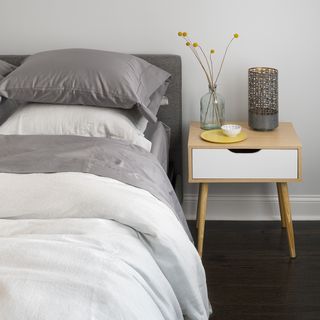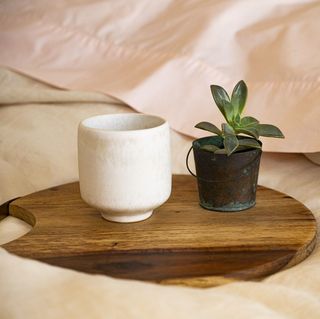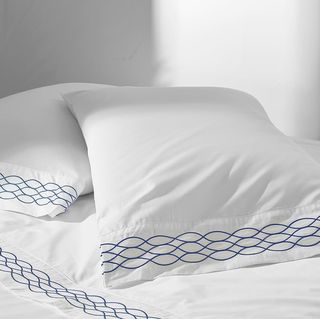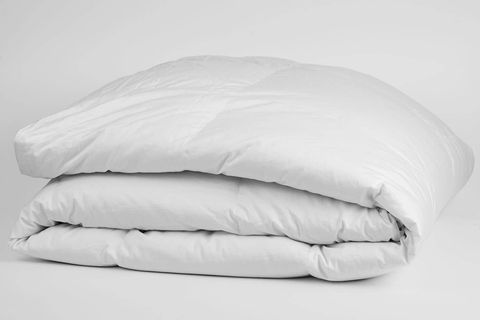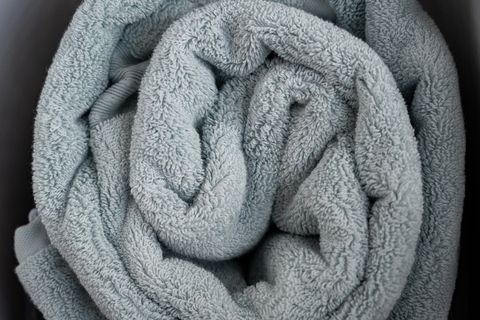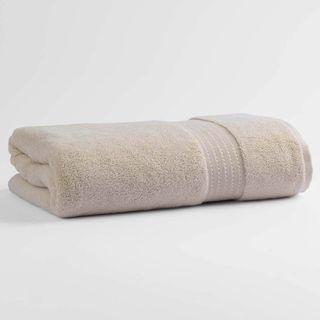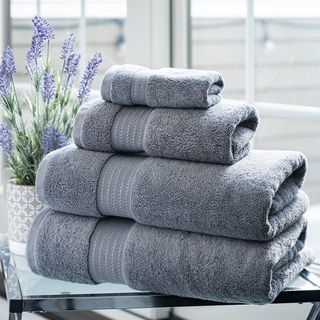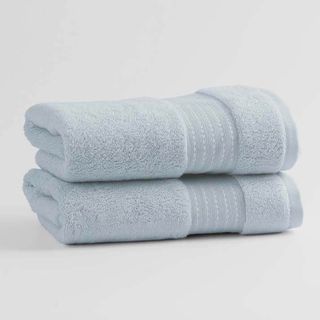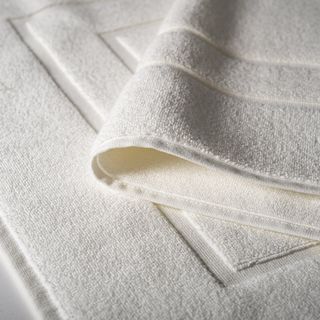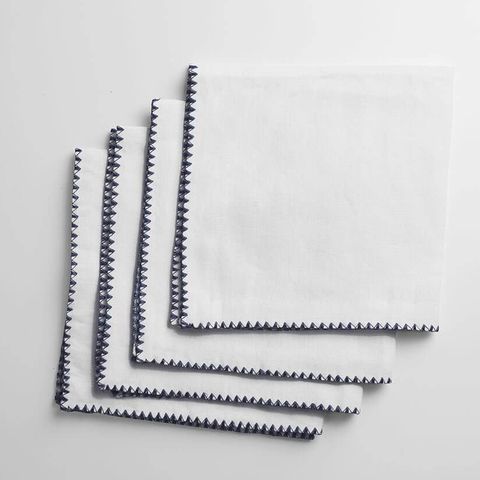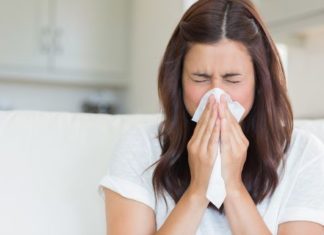When you invest in a new set of sheets or towels, it’s normal to wonder how long they’ll stay in their best condition. After all, you purchase these items to use them regularly, and there are few household items that go through as many wash cycles as bedding, bath and tabletop fabrics, whether that’s pillowcases, washcloths or table linens.
If you fine-tune a few key regular practices, though, you will ensure their lifespan for years to come. Some brands make this easier — Linger Home’s linens, towels and more are made from high-quality and sustainably-sourced materials like French flax linen, organic cotton, and USA-grown Supima cotton, which can put you ahead of the starting line when it comes to care. (Bonus: Their products are also Oeko-Tex certified, which means they’ve been tested ensure there isn’t an unsafe level of chemicals present.)
By following guidelines that our Good Housekeeping experts rely on, you’ll guarantee your textiles stick around in tip-top shape, making day-to-day routines just a little bit softer.
In the Bedroom
Bedsheets and Pillowcases
Typical lifespan: two to three years
How to help them last longer: Having the most welcoming sheets possible is key for both evening wind down time and a good night’s sleep.
“From a construction standpoint, think about replacing your sheets if they start to look thin,” says Lexie Sachs, Good Housekeeping Institute’s Textile Director. Sheets tear over time, especially with the friction of tossing and turning. She also notes that torn hems and discoloration are clear signs that new sheets should be on your horizon. “If they start to feel scratchy, it might be time to replace them.”
Having two (or, ideally, three) different sets to cycle through will also help extend the life of your sheets, along with washing them once a week. “Some people don’t change their sheets for a long time and that’s really not good,” says Carolyn Forte, Cleaning Lab Director at the Good Housekeeping Institute. She points out that pillowcases are particularly prone to makeup stains and sweat. “Sheets and pillowcases hold on to all of those skin cells, so washing them every one to two weeks is important.”
Comforters and Duvets
Typical lifespan: 5 to 15 years
How to help them last longer: Both comforters and duvets can have a lengthy lifespan if you rotate them out in the summer months for a lighter blanket or quilt, but their longevity also depends on the type of filling material used.
Down alternative duvet inserts are less expensive and great for people with allergies to down or feathers, but they need to be replaced once they begin to lose their shape. Goose down tends to hold onto its fluffy construction well, but is generally warmer than down alternative, making a summertime bedding swap pretty much a given. With both types, look for a duvet insert that uses a “baffle box” construction.
“Baffle box construction is where there are individual pieces of fabric within the boxes of the duvet so that it prevents the fill from shifting around,” says Sachs. “Otherwise, the filling can clump up easily.”
Preventing clumping is also critical when washing and drying duvets and comforters. “Make sure you use a large capacity washing machine and the “bedding” cycle, if your machine has one, because if [the duvet] is crammed in, there’s going to be friction, which means there’s going to be abrasion,” Forte notes. And when it comes to drying these snuggly staples, it’s important to fluff them up as thoroughly as possible—particularly those of the down variety. “You want to make sure your down is as dry and as fluffy as possible because it’s going to insulate you better,” she says.
Duvet and pillow protectors can also help lengthen the life of your bedding by adding an extra line of defense between the plush inner-material and the outside elements.
In the Kitchen
Dish Towels
Typical lifespan: one year
How to help them last longer: “Dish towels aren’t going to be the same type of construction as bath towels,” says Sachs. “They’re a little bit less absorbent.” And while this means they’ll dry faster than bath towels, the downside is that they should be swapped out more frequently.
Forte recommends keeping one dish towel specifically for drying dishes, and another that’s only for drying your hands, rotating the hand towel as frequently as a hand towel in the bathroom. Dish cloths, on the other hand—which come into contact with food particles when they scrub dirty dishes—should be washed as often as possible to prevent odor penetration (ideally everyday or every other day).
In the Bathroom
Bath Towels and Hand Towels
Typical lifespan: two to four years
How to help them last longer: Loose fibers, fraying around the towel’s edges and loss of absorbency are all signs that it’s time to swap your towels out for a new set.
“Most bath towels have cotton loops that make them really full and absorbent,” says Sachs. “If the loops start to come undone so that you see stringy pieces of the towel, or the hems around it are unraveling, those are signs of wear.”
And while towels are extremely adept at drying off human bodies, they’re not so quick to dry on their own. If left in a pile on the floor or not hung-up to air out after a shower or bath, they stand the chance of developing mold, mildew and other bacteria that contributes to a shorter towel lifespan, and some musty odors. Forte recommends using a towel bar for hanging used towels instead of a hook (it helps them to air out quicker), and emphasizes that the faster you can get a towel up and drying, the fresher it’ll stay.
Using the right laundering techniques can also do wonders for the longevity of bathroom textiles. Bath towels should be washed after at least every three or four uses, while hand towels and washcloths should be washed and rotated more frequently. Wash towels in warm to hot water, using fabric softener on occasion. (Avoid using it in every load because it has a tendency to coat fibers and trap hard water minerals, making the towels feel stiff.)
If your towels seem more scratchy than plush, a vinegar wash can help get them back to their normal, cozy feel. Add a half-cup of vinegar in the wash cycle and a half-cup of vinegar in the rise cycle —with no detergent—the next time you pop in a load, and that should do the trick.
In the Dining Room
Napkins and Tablecloths
Typical lifespan: 10 years or more (heirloom potential!)
How to help them last longer: Napkins, tablecloths and runners can last a lifetime, with well-preserved versions frequently passed down from generation to generation. But stains are always a threat to the longevity of tabletop textiles.
“Make sure when a spill happens on your napkins or tablecloth that you blot it right away—get to it as quickly as you can,” says Forte. “Then don’t let it sit in the hamper or the laundry basket for a week — just wash it promptly.”
When a stain-making incident strikes with guests over, and you can’t exactly grab their napkin and run mid-dinner, have your washing machine pull double-duty as a soaking station after everyone leaves. “Use your washing machine to soak the napkins or tablecloth so it’ll keep the stains from setting. Then it’ll be easier to remove when you do have time to wash it,” says Forte.
Stains aside, how often to wash your napkins depends on how frequently and in what way they’re being used. Cloth napkins that mostly serve a decorative purpose might not need to be washed after each meal, but it goes without saying that any napkin that has touched someone’s mouth, nose or facial area should get an immediate wash.
Applying a stain repellant to tablecloths can also help it resist any potential red wine disasters before they occur, keeping your dining room showpiece pristine for years to come.























